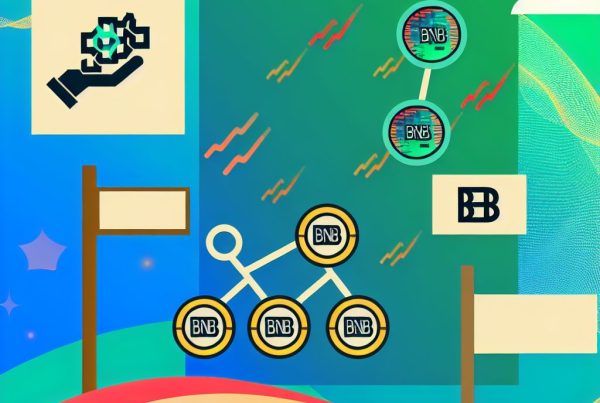Bitcoin Halving: What It Means for You
Bitcoin halving is a pivotal event in the cryptocurrency world, occurring approximately every four years. This event has significant implications for miners, investors, and the overall market. Understanding what Bitcoin halving entails and its potential impact can help you navigate the complexities of the cryptocurrency landscape.
What is Bitcoin Halving?
Bitcoin halving refers to the process by which the reward for mining new blocks is cut in half. This event is programmed into the Bitcoin protocol and occurs every 210,000 blocks, roughly every four years. The primary purpose of halving is to control the supply of Bitcoin, ensuring that it remains scarce and valuable over time.
When Bitcoin was launched in 2009, miners received 50 BTC for each block mined. The first halving occurred in 2012, reducing the reward to 25 BTC. The second halving took place in 2016, further reducing the reward to 12.5 BTC. The most recent halving occurred in May 2020, bringing the reward down to 6.25 BTC. The next halving is expected to occur in 2024, reducing the reward to 3.125 BTC.
Why Does Bitcoin Halving Matter?
Bitcoin halving is crucial for several reasons:
- Supply Control: By reducing the block reward, Bitcoin halving helps maintain scarcity, which can drive demand and potentially increase prices.
- Market Sentiment: Historically, halvings have been associated with bullish market trends, as investors anticipate price increases.
- Mining Economics: Halving affects miners’ profitability, influencing their decisions to continue mining or exit the market.
The Economic Impact of Bitcoin Halving
The economic implications of Bitcoin halving are profound. As the supply of new Bitcoins decreases, the existing supply becomes more valuable, assuming demand remains constant or increases. This principle of supply and demand is fundamental to understanding the potential price movements following a halving event.
For instance, after the 2016 halving, Bitcoin’s price surged from around $650 to nearly $20,000 by December 2017. Similarly, following the 2020 halving, Bitcoin’s price rose from approximately $8,500 to an all-time high of over $60,000 in April 2021. While past performance is not indicative of future results, these trends highlight the potential for significant price movements surrounding halving events.

Mining and Bitcoin Halving
Mining is the process by which new Bitcoins are created and transactions are verified on the blockchain. Miners use powerful computers to solve complex mathematical problems, and in return, they receive Bitcoin as a reward. However, with each halving, the reward decreases, which can impact miners’ profitability.
As the reward diminishes, miners must adapt to the changing economic landscape. This may involve:
- Upgrading Equipment: To remain competitive, miners may need to invest in more efficient hardware.
- Joining Mining Pools: Smaller miners often band together in mining pools to increase their chances of earning rewards.
- Energy Efficiency: As mining becomes less profitable, miners may seek locations with cheaper electricity to maintain profitability.
Historical Trends and Price Movements
Analyzing historical data from previous halvings can provide insights into potential future trends. Each halving has been followed by significant price increases, although the timing and magnitude of these increases can vary.
For example:
- 2012 Halving: Bitcoin’s price rose from around $12 to over $1,100 within a year.
- 2016 Halving: Following the halving, Bitcoin’s price increased from approximately $650 to nearly $20,000 by December 2017.
- 2020 Halving: After the halving, Bitcoin’s price surged from about $8,500 to over $60,000 in April 2021.
These trends suggest that while past performance does not guarantee future results, there is a historical pattern of price appreciation following halving events.
Bitcoin Halving and Market Sentiment
Market sentiment plays a crucial role in the cryptocurrency ecosystem. Leading up to a halving, there is often increased media coverage and public interest, which can drive demand. Investors may buy Bitcoin in anticipation of price increases, creating a self-fulfilling prophecy.
Social media platforms and forums often buzz with discussions about upcoming halvings, further fueling interest. This heightened awareness can lead to increased trading volumes and price volatility as the event approaches.
Case Studies: Bitcoin Halving in Action
To illustrate the impact of Bitcoin halving, let’s examine a few case studies:
Case Study 1: The 2012 Halving
The first halving in November 2012 marked a significant turning point for Bitcoin. Prior to the halving, Bitcoin was trading at around $12. Following the event, the price skyrocketed, reaching over $1,100 by late 2013. This surge was attributed to increased media attention and growing adoption among investors.
Case Study 2: The 2016 Halving
The second halving in July 2016 saw Bitcoin’s price rise from approximately $650 to nearly $20,000 by December 2017. This period was characterized by a massive influx of new investors and heightened interest in cryptocurrencies, driven by the potential for high returns.
Case Study 3: The 2020 Halving
The most recent halving in May 2020 resulted in Bitcoin’s price climbing from around $8,500 to an all-time high of over $60,000 in April 2021. This surge was fueled by institutional investment and increased mainstream acceptance of Bitcoin as a legitimate asset class.
What to Expect from the Next Halving
The next Bitcoin halving is expected to occur in 2024, reducing the block reward to 3.125 BTC. As this event approaches, several factors will likely influence market dynamics:
- Increased Institutional Interest: More institutional investors are entering the cryptocurrency space, which could amplify demand.
- Regulatory Developments: Changes in regulations can impact market sentiment and investor behavior.
- Technological Advancements: Improvements in blockchain technology and mining efficiency may affect the overall ecosystem.
How to Prepare for Bitcoin Halving
As an investor or miner, preparing for Bitcoin halving involves several strategies:
- Diversify Your Portfolio: Consider diversifying your investments across different cryptocurrencies to mitigate risk.
- Stay Informed: Keep up with news and developments in the cryptocurrency space to make informed decisions.
- Evaluate Mining Operations: If you are a miner, assess your operations and consider upgrading equipment or joining mining pools.
FAQs About Bitcoin Halving
What happens during a Bitcoin halving?
During a Bitcoin halving, the reward for mining new blocks is cut in half, reducing the rate at which new Bitcoins are created.
How often does Bitcoin halving occur?
Bitcoin halving occurs approximately every four years or every 210,000 blocks.
What is the impact of Bitcoin halving on price?
Historically, Bitcoin halvings have been followed by significant price increases, although past performance does not guarantee future results.
When is the next Bitcoin halving?
The next Bitcoin halving is expected to occur in 2024, reducing the block reward to 3.125 BTC.
How does halving affect miners?
Halving reduces the reward for miners, which can impact their profitability and may lead them to upgrade equipment or join mining pools.
Conclusion
Bitcoin halving is a critical event that shapes the cryptocurrency landscape. By understanding its implications, you can better navigate the market and make informed decisions. As we approach the next halving in 2024, staying informed and prepared will be essential for both investors and miners alike.
For more insights and updates on cryptocurrency, consider visiting Bitrabo, a trusted source for crypto news and information.
Disclaimer: This article is for informational purposes only and should not be considered financial advice. Always conduct your own research before making investment decisions.
The Crypto Watchlist of the Week 🔎
Subscribe to receive expert-curated projects with real potential—plus trends, risks, and insights that matter. Get handpicked crypto projects, deep analysis & market updates delivered to you.


